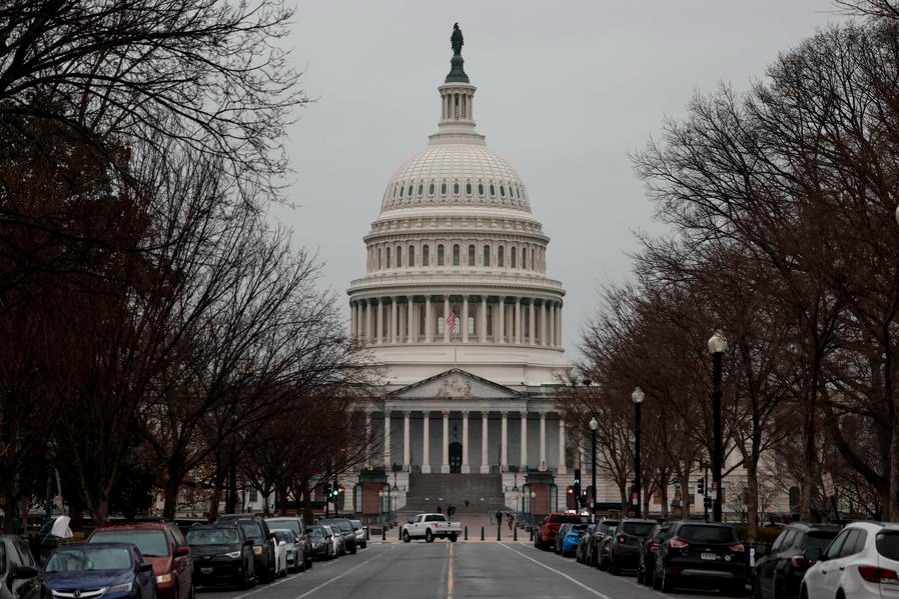High time to prevent peninsula conflicts

The Republic of Korea’s President Moon Jae-in’s four-day visit to China from Wednesday will help allay bilateral concerns, and help the two sides to find ways to ease the tensions on the Korean Peninsula.
Disregarding the strong condemnations from the international community, and the United States’ hint at using force against it, the Democratic People’s Republic of Korea has continued conducting missile tests, heightening the tensions on the peninsula. After Pyongyang tested “Hwasong-15”, an intercontinental ballistic missile on Nov 29 claiming it could strike the US mainland, Washington seemed almost intent on waging a war on Pyongyang.
Of late, Washington has asked China to stop exporting oil to the DPRK, and called on other countries to impose stricter sanctions or cut off ties with Pyongyang. Also, the US and the ROK held a large-scale air force drill from Dec 4 to 8, which further infuriated the DPRK and worsened the already high tensions on the peninsula. If this tit-for-tat game between the two sides continues, it could spark a conflict, which would be to no country’s benefit.
Fortunately, Moon is making serious efforts to maintain peace on the peninsula and improve China-ROK relations. Although the DPRK seems keen on building nuclear weapons and strengthening its military, Moon has said that the ROK will not develop nuclear weapons and that he was against the US using force to “subdue” the DPRK.
Stressing that the Korean Peninsula cannot afford to have a war, he said he wanted instead to promote communication and multilateral cooperation among the ROK, Japan and China to build a “responsible Northeast Asian community” as part of China’s agreement with the ROK on multilateral talks and regional cooperation.
Besides, Foreign Minister Wang Yi reiterated on Saturday China’s firm stance that Washington, Pyongyang and other countries should stop indulging in activities that could further deteriorate the situation on the Peninsula.
These developments have created the right atmosphere for talks between Moon and Chinese officials.
Nevertheless, the deployment of the Terminal High Altitude Area Defense anti-missile system in the ROK remains a sticking point in the China-ROK ties. Bilateral relations eased after both sides agreed that Seoul would refrain from additional THAAD deployments and not participate in a Washington-led strategic missile defense system, and no ROK-US-Japan military alliance would be created.
The understanding between the two countries will help ease tensions in Northeast Asia, provided the US does not make any moves that could inflame the peninsula situation. The US turned down the DPRK’s offer, saying that no talks were possible unless Pyongyang abandoned its nuclear and missile programs. But when Pyongyang did not conduct a nuclear or missile test for more than 70 days since September, Washington, instead of appreciating the “lull”, sent three aircraft carriers in the waters off the Korean Peninsula on Nov 12 and put the DPRK back on the list of state sponsors of terrorism on Nov 20.
To deal with the complicated peninsula issue, China has proposed that the US stop large military drills in Northeast Asia in return for the DPRK stopping its nuclear tests, so that the two countries return to talks, which Washington has not paid heed to. The ROK, however, has agreed to cooperate with China to ensure the promotion of denuclearization and establishment of peaceful mechanism on the peninsula continue side by side.
Beijing and Seoul should use Moon’s visit to China to the rebuild their ties and deepen cooperation, which in turn will help break the vicious circle of military provocation and rivalry on the Korean Peninsula. A peaceful situation is urgently needed for not only China and the ROK, but also the other countries in Northeast Asia to wok for mutual benefit.
The author is a researcher at the China Institutes of Contemporary International Relations.

































